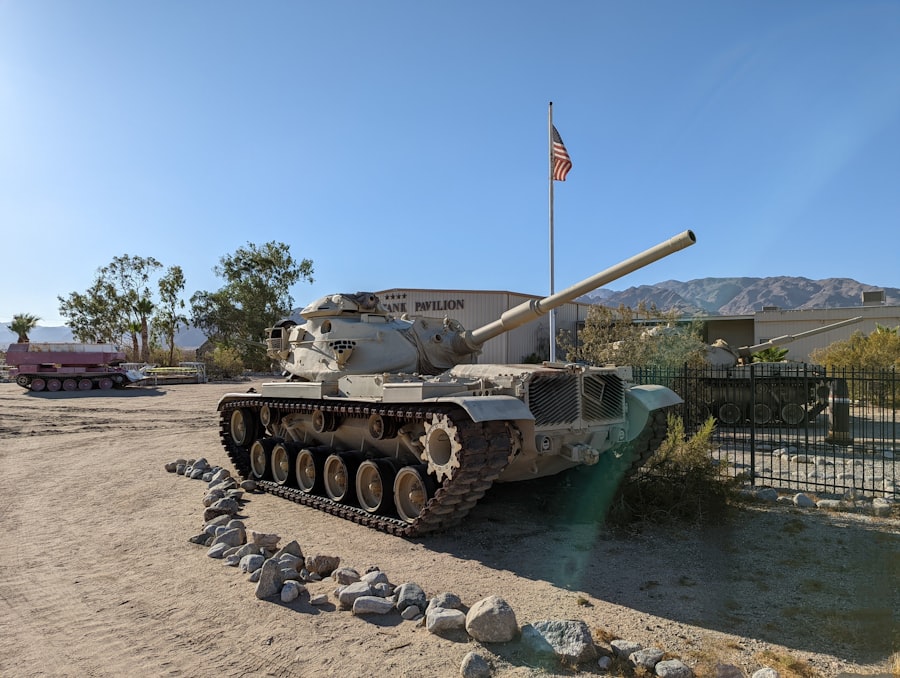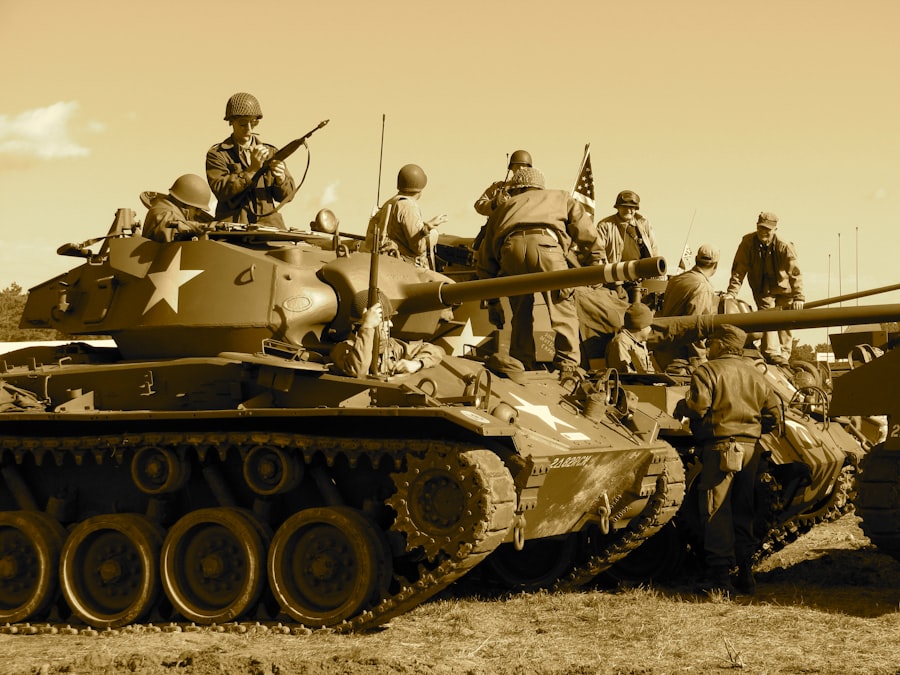
Armored Assault Vehicle Crew Members play a pivotal role in modern military operations, serving as the backbone of ground combat units. These highly trained individuals operate and maintain armored vehicles, such as tanks and infantry fighting vehicles, which are essential for executing a variety of missions, from direct combat to reconnaissance and support roles. The complexity of these vehicles requires crew members to possess a unique blend of technical skills, tactical knowledge, and physical endurance.
Their responsibilities extend beyond mere operation; they are integral to the success of their units in both offensive and defensive operations. The role of an Armored Assault Vehicle Crew Member is not only about driving or firing weapons; it encompasses a wide range of tasks that require teamwork, quick decision-making, and adaptability. Crew members must work in unison with their teammates to ensure the vehicle operates effectively under various conditions, whether in urban environments or rugged terrains.
The dynamic nature of military engagements means that these individuals must be prepared for anything, from engaging enemy forces to navigating through challenging landscapes while maintaining the integrity of their vehicle and the safety of their crew.
Key Takeaways
- Armored Assault Vehicle Crew Members are responsible for operating and maintaining military vehicles in combat situations.
- Training and education requirements for this role include completion of basic combat training and advanced individual training.
- Job duties and responsibilities include operating and maintaining armored vehicles, participating in combat operations, and ensuring the safety of the crew and vehicle.
- Career opportunities and advancement for armored assault vehicle crew members may include leadership roles and specialized training in advanced vehicle systems.
- Salary and benefits for armored assault vehicle crew members vary based on rank, experience, and location, and may include healthcare, housing, and retirement benefits.
Training and Education Requirements
To become an Armored Assault Vehicle Crew Member, candidates typically undergo rigorous training that begins with basic military education. This foundational training is crucial as it instills discipline, physical fitness, and an understanding of military protocols. Following this initial phase, recruits are often assigned to specialized training programs focused on armored vehicle operation.
In the United States Army, for instance, this training occurs at the Armor School located at Fort Benning, Georgia. Here, soldiers learn about the various types of armored vehicles, their systems, and the tactics employed in their use. The training process is comprehensive and includes both classroom instruction and hands-on experience.
Crew members learn about vehicle mechanics, weapon systems, navigation, and communication protocols. They also engage in simulated combat scenarios that test their ability to operate under pressure. This combination of theoretical knowledge and practical application ensures that crew members are well-prepared for the challenges they will face in the field.
Additionally, ongoing training is essential; as technology evolves, so too must the skills of these personnel. Regular drills and refresher courses help maintain proficiency and readiness.
Job Duties and Responsibilities

The duties of an Armored Assault Vehicle Crew Member are multifaceted and can vary depending on the specific role within the crew. Typically, a crew consists of several members, each with designated responsibilities. For example, in a tank crew, there is usually a commander, driver, gunner, and loader.
The commander oversees operations and makes tactical decisions; the driver navigates the vehicle; the gunner operates the main weapon system; and the loader ensures that ammunition is available and ready for use. In addition to these primary roles, crew members are responsible for conducting routine maintenance checks on their vehicles to ensure operational readiness. This includes inspecting mechanical systems, checking fluid levels, and performing minor repairs as needed.
They must also be adept at troubleshooting issues that may arise during missions. Furthermore, effective communication is vital; crew members must relay information quickly and accurately to coordinate their actions during combat situations. This level of collaboration is essential for executing maneuvers effectively and responding to threats in real-time.
Career Opportunities and Advancement
| Metrics | Data |
|---|---|
| Job Openings | 200 |
| Promotion Rate | 15% |
| Employee Turnover | 10% |
| Training Opportunities | Yes |
Career advancement opportunities for Armored Assault Vehicle Crew Members can be quite promising within military structures. As individuals gain experience and demonstrate proficiency in their roles, they may have the opportunity to take on leadership positions or specialize in advanced technical roles. For instance, a crew member may progress from a junior position to a non-commissioned officer (NCO) role, where they would be responsible for training new recruits and overseeing operations within their unit.
Moreover, there are opportunities for further specialization within armored units. Crew members may choose to focus on specific vehicle types or advanced weapon systems, which can lead to additional training and certifications. Some may even transition into roles that involve strategic planning or operational management within larger military frameworks.
The skills acquired as an Armored Assault Vehicle Crew Member are also transferable to civilian careers in fields such as law enforcement, security services, or automotive technology, providing a broad spectrum of career pathways after military service.
Salary and Benefits
The compensation for Armored Assault Vehicle Crew Members varies based on rank, experience, and location of service. In the United States military, salaries are determined by a standardized pay scale known as the Military Pay Chart. As enlisted personnel advance in rank from private to sergeant or beyond, their base pay increases accordingly.
Additionally, service members receive various allowances that can significantly enhance their overall compensation package. These may include housing allowances, food allowances, and special pay for hazardous duty or deployment. Beyond salary, military service offers a range of benefits that contribute to long-term financial security and well-being.
Retirement benefits are also substantial; after 20 years of service, personnel can retire with a pension that provides financial stability in their post-military life.
Work Environment and Conditions

The work environment for Armored Assault Vehicle Crew Members is often demanding and can vary significantly based on mission requirements. Crew members typically operate in diverse settings ranging from training facilities to active combat zones. During peacetime or training exercises, they may work in controlled environments where they can focus on honing their skills without immediate threats.
However, when deployed in combat situations, the environment becomes much more unpredictable and hazardous. Crew members must be prepared to endure extreme conditions while operating armored vehicles. This includes exposure to harsh weather elements such as heat, cold, rain, or dust storms that can affect both vehicle performance and crew comfort.
Inside the vehicle itself can be cramped and noisy due to engine sounds and weapon fire. The psychological demands are equally significant; crew members must maintain focus under stress while making quick decisions that could impact their safety and mission success. The camaraderie developed among crew members often serves as a crucial support system during these challenging times.
Skills and Qualities Needed for Success
Success as an Armored Assault Vehicle Crew Member requires a diverse skill set that encompasses both technical abilities and personal attributes. Technical skills include proficiency in operating complex machinery, understanding vehicle mechanics, and being able to troubleshoot issues effectively. Familiarity with various weapon systems is also essential; crew members must know how to operate them safely and efficiently under combat conditions.
In addition to technical expertise, personal qualities such as teamwork, adaptability, and resilience are critical for success in this role. Crew members must work closely with one another to execute missions effectively; strong communication skills are vital for coordinating actions during high-pressure situations. Adaptability is equally important; the ability to adjust tactics based on changing circumstances can mean the difference between success and failure in combat scenarios.
Resilience helps crew members cope with the physical and emotional challenges they face during deployments.
Conclusion and Resources for Further Information
For those interested in pursuing a career as an Armored Assault Vehicle Crew Member or simply wanting to learn more about this vital role within military operations, numerous resources are available. Official military websites provide detailed information about enlistment processes, training programs, and career paths within armored units. Additionally, organizations such as the National Guard or Reserve components offer insights into part-time opportunities that allow individuals to serve while pursuing civilian careers.
Books on military tactics and armored warfare can also provide valuable context about the historical significance of armored vehicles in combat scenarios. Online forums and veteran organizations can connect aspiring crew members with experienced personnel who can share firsthand experiences and advice about navigating this career path successfully. Engaging with these resources can help individuals make informed decisions about their future in this challenging yet rewarding field.
If you are interested in learning more about careers in the USA, specifically as an Armored Assault Vehicle Crew Member, you may want to check out the article “A Day in the Life of an Armored Assault Vehicle Crew Member” on Careers in the USA. This article provides valuable insights into the responsibilities and duties of this role, as well as the skills and qualifications required to pursue a career in this field. For more information on various career options in the USA, visit



